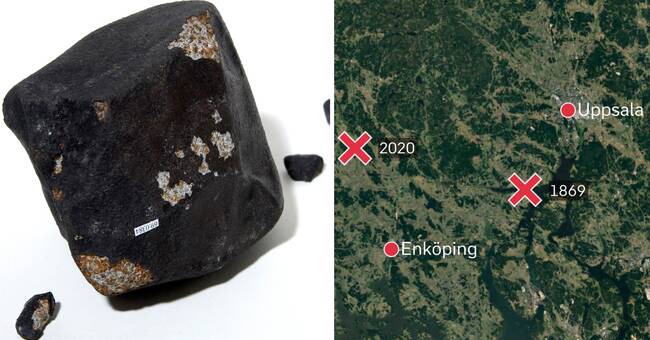On New Year's Day 1869, visitors were on their way home from the Mass in Fittja Church, southwest of Uppsala.
Suddenly loud bangs were heard and then stones began to rain inexplicably from the sky - to land on the ice-covered Lårstaviken between Hessle farm and Wik's castle.
It was Sweden's first documented meteorite impact and was named the Hesslem meteorite.
151 years later, further precipitation occurs just a few miles away.
- Just like now, a light phenomenon was seen in the sky, and it was seen all the way from Södertälje, says Dan Holtstam.
- Since the 18th century, scientists have accepted that fallen rocks came from space, so as a natural phenomenon it was not unknown.
But it must have been a sensation for residents nearby.
Negotiated the findings
The direct observations, the weather conditions and the black color of the meteorites against the white snow led to residents in a short time being able to collect hundreds of stones.
- Then scientists came there and negotiated a lot, says Dan Holtstam.
Some of the finds are now stored at the Swedish Museum of Natural History.
In the clip below, astronomer Eric Stempels explains what happens when a space rock collides with Earth
Javascript is disabled
Javascript must be turned on to play video
Read more about browser support
The browser is not supported
SVT does not support playback in your browser.
We therefore recommend that you switch to another browser.
Read more about browser support
In the clip, Eric Stempels explains how the car lit up the sky.
Photo: Christoffer Urborn / SVT

